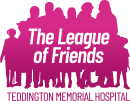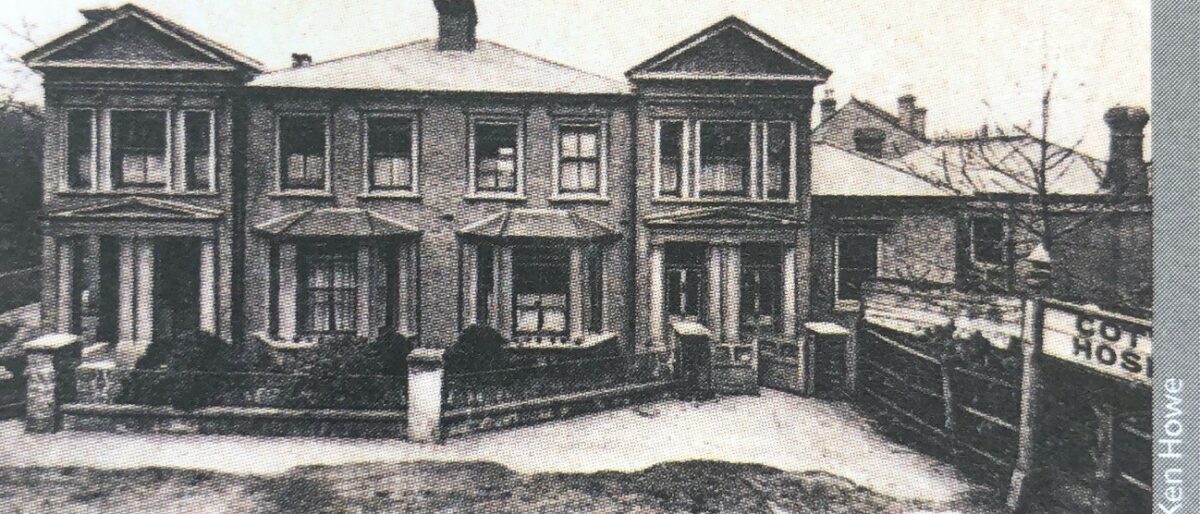Are you interested to discover the secrets of Teddington Memorial Hospital? The hospital has a rich and varied one-hundred-and-forty-seven-year history, and here we explore 7 little-known facts of which you may be unaware.
1. The site started life as a Victorian “cottage hospital” tending to the poor and destitute at the heart of Teddington
On 10 July 1874, a meeting was held at the home of benefactor Thomas Chappell to consider establishing a hospital to service the Teddington and Hampton Wick area. His offer to donate a pair of villas was accepted at a residents’ public meeting, the minutes of which state:
‘It is desirable that a Cottage Hospital be established for the benefit of the sick poor of Teddington and Hampton Wick and the immediate vicinity, and those present do severally pledge themselves to do all in their power towards the maintenance and support of such a hospital.’
The hospital opened on 20 March 1875. It had four beds, and patients paid 1 shilling daily (5p). Money was raised by annual subscriptions, donations, bazaars, fetes, concerts, and theatrical performances. According to annual reports, from 1875 to 1924, an impressive 12,731 patients were treated at the hospital.
2. Benefactor Thomas Chappel was part of leading music publishers and piano manufacturers Chappell & Co.
Chappell & Co. initially focused on music publishing and concert promotion. In 1840 the firm expanded its offering and started manufacturing pianos.
It was founded in 1811 by Samuel Chappell in partnership with music professors Francis Tatton Latour and Johann Baptist Cramer. Cramer was also a well-known London composer, teacher, and pianist. Chappell died in 1834, and his oldest son William Chappell took over, after which his younger brother Thomas Chappell took charge.
3. In 1902 a nurse’s annual salary was £24
Thomas Chapell died in 1902, and his family donated £500 to the hospital, which led to the opening of the Chappell Ward, increasing the capacity to 22 beds.
In 1902 a third trained nurse, Maud Pearson, was appointed to meet the additional workload on an annual salary of £24.
4. The Medical Committee transformed the hospital into a living war memorial in 1921, erecting an obelisk to those who died in the First World War
In 1919 it was agreed to build a new hospital and call it the ‘Memorial Hospital’ as a fitting tribute to the town’s 337 dead.
In 1921, a service officially unveiled the Portland Stone war memorial outside the hospital site. The Chaplain General conducted the ceremony to the Forces, The Right Reverend Bishop Taylor Smith.
This memorial continues to be the site for Teddington’s Remembrance Day Service
5. Teddington Memorial Hospital was under threat of closure in 1983
In 1982 the in-patient facilities at the hospital were threatened with closure. The League, under the leadership of Pamela Bryant, organised a campaign to save the hospital. Some 35,000 petition signatures were received, objecting to the proposal. A fighting fund was established, which eventually raised £25,000.
In October 1983, the League organised a 24-hour candle-lit vigil on the front forecourt of the hospital. Over 2,000 people attended and signed the Vigil Book.
In November 1983, Health Minister Kenneth Clarke received a delegation headed by MP Toby Jessel, vociferously supported by Pamela Bryant. In December of the same year, Kenneth Clarke reprieved the hospital and designated 27 General Practitioner Beds.
6. A timeline runs through the hospital’s corridors, taking visitors back to the earliest days of healthcare at the site
This fascinating historical timeline, on display in the hospital corridors, is a permanent reminder of the hospital’s history and the many achievements of The Friends of TMH. Working in partnership with Hounslow and Richmond Community Healthcare NHS Trust (HRCH) and the London Borough of Richmond upon Thames (LBRuT), The Friends has created this excellent timeline. It marks memorable dates and highlights the many changes and additions the hospital has undergone, detailing some of the major milestones from 1874 until the present day.
This graphical representation reinforces the true sense of the word community. Without the continued dedication of our supporters, Teddington Memorial Hospital would not be here today, providing much-needed essential health services. The Friends has a proud history of supporting the hospital and ensuring it continues to be at the heart of the local community.
7. The Pamela Bryant Ward (and Grace Anderson Ward) replaced the old Nightingale wards
2004 marked the official opening of two new wards at Teddington Memorial Hospital, replacing the old Nightingale wards with modern facilities.
Plaques were unveiled, including one by Pamela Bryant MBE, the then chairperson of The Friends of Teddington Memorial Hospital, now Life President.
Today The Pamela Bryant Ward is a 29-bed ward for adults who have been discharged from the hospital but need a period of rehabilitation before returning home.
The ward also admits palliative care patients and a few people directly from home whose condition is suitable for treatment in a community hospital rather than a larger acute hospital.
How can you help
There are many ways you can get involved with The Friends and help to fund vital projects to benefit our community.
One of the easiest ways is to donate using this page’s Donate button. Every donation, from a handful of change to a substantial legacy, is much appreciated by The Friends, TMH staff and your community.
To find out more, click Get involved to join, donate or volunteer.

